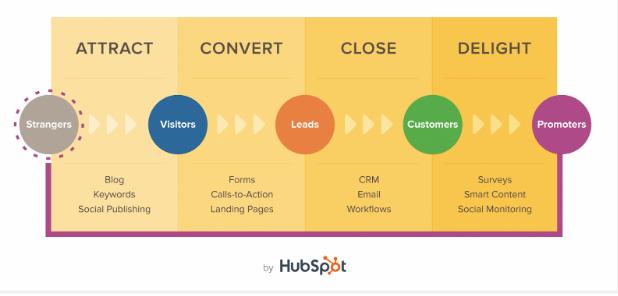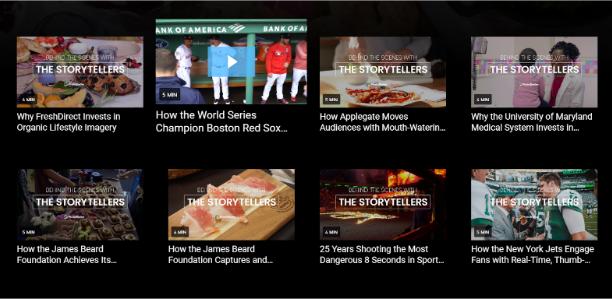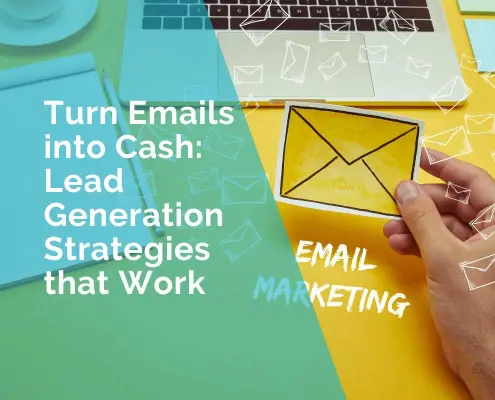From Content Strategy to Content Plan: A Guide for Marketers
Marketers need a concrete plan for creating and distributing content effectively. A solid content plan will help you prepare and plan for cost-effective and reliable sources of traffic and new leads.
But, before you can develop your plan, you must first understand the relationship between a content strategy, content marketing strategy, and content marketing plan.
Below, we take a look at each concept in order to isolate the differences and help you discover how their successful integration as a systemic process can lead to increased marketing success.
What is a Content Strategy?
A content strategy is a holistic overview of all the content a brand has created (audio, visual, and/or written) and its past, present, and possible future uses.
It’s a high-level vision that guides the creation of content designed to help you attract your target audience at different stages of the funnel and maintain engagement even after purchase.
A content strategy helps you focus your content on important things, such as making sure that:
- You’re creating content that is relevant to your target reader
- Your content solves a problem for your audience
- It sets your brand apart from the competition
- You’re focusing on the right content formats for high engagement
- You’re publishing your content on the right channels
- You can measure content effectiveness
- Content is being generated in the most cost-effective way, with tools like Flux 1.1 PRO improving the efficiency of creating high-quality visuals.
- You can easily manage content creation and publication with seamless workflows
What is a Content Marketing Strategy?
A content marketing strategy focuses only on particular marketing use cases such as:
- Increasing brand reach
- Expanding to new target markets
- Cross-platform content sharing
- Lead generation
- Conversions
- Email subscriber list growth
It’s designed to drive targeted traffic to your website, and once those people arrive, your on-site content strategy works to convert them into leads, customers, and fans. To ensure that you are able to develop and implement the strongest marketing strategy make sure to use an industry-leading website builder designed to help you grow your online presence.
What is a Content Plan?
If you have already developed a content strategy, you probably think that you’re covered, but in reality, content strategy and content planning are very different concepts.
A content plan is the step-by-step tactical application of the content marketing strategy.
It determines the type of content you want to create and outlines the purpose of the content. The plan also clarifies who is responsible for content creation and sets expectations for how you will create it.
Content planning is all about processes and workflows. It gives your brand structure to determine which content initiatives to execute, how to do it, and when.
With a well-developed plan, you’ll be able to overcome the content marketing challenges you face daily, including:
- Making sure content is unique and relevant
- Accounting for resources at hand for more productivity
- Optimizing each piece of content for maximum engagement
- Keeping on schedule and staying on top of tasks, projects, and timelines
As a marketer, you know how difficult it can be to move from a strategic vision to an efficient and effective content marketing engine. In fact, this is something that many brands fail to achieve.
However, once your plan is in place, everyone will be working from the same detailed map which makes it a lot easier to avoid getting off course.
Examples of Brands Successfully Creating Content Marketing Strategies
Below are three examples of brands successfully creating content marketing strategies and their tactical applications via a content plan.
Example #1: HubSpot’s Inbound Marketing
HubSpot is a well-established innovator in digital marketing. The company coined the term “Inbound Marketing”, and showcases this concept with a simple process, which involves the following steps:
- Attracting
- Converting
- Closing
- Delighting
Source
The brand creates lots of valuable content that helps its customers and prospects progress their marketing.
Because of this, most of HubSpot’s audience thinks of the brand as an important resource, whether or not they actually buy from them.
On the website, you’ll find many free guides, ebooks, marketing kits, webinars, video courses, and blogs – all of which are detailed and authoritative. The quality of the content is high and every post is relevant and engaging, a key factor for great search rankings.
What can you learn from this brand’s content plan?
Quality and relevance trump quantity, so put your focus on creating top-notch content and the results will take care of themselves.

Example #2: Buffer’s Open Blog
Buffer is a popular social media-tracking app that lets you schedule posts on social media platforms and track your growth easily.
The brand uses its blog to market the product and has experienced phenomenal success thanks to its foundation of transparency, trust, and openness. This sounds simple, but it’s actually genius.
The content on the blog is designed to show readers not only what the app does, but also how they can leverage it to grow their presence online. Each post is written to provide incredible value and contains juicy and educational information to help marketers get the most from the Buffer app.
What can you learn from Buffer’s content plan?
Focus on providing your audience with value. Inform and educate your readers and tell stories that people want to hear while providing them with solutions to their specific problems so you can become their go-to resource for all their future needs.
Example #3: The Storytellers
The Storytellers is a site that highlights the people behind the brand’s products. This is a great way to make the company relatable and personable.
One way they do this is by creating videos that highlight the day-to-day operations of the business that their audience doesn’t usually get to see. This gives their viewers a clear idea of how the company works, as well as shows them what’s unique about the brand.
It also gives the brand a chance to showcase all the different individuals who make the business a success, helping to foster loyalty with both employees and customers.
The best part is that all their videos are short, entertaining, and informative, which makes it more likely that their viewers will share their brand story on social media.
What can you learn from this brand’s content plan?
Create short videos of your daily operations, offices, manufacturing process, etc. to boost engagement with your audience. You can interview employees, vendors, or some of your best customers to create more credible videos.

How to Create a Content Plan That Brings Results
By now, you have a clearer picture of the relationship between a content strategy, content marketing strategy, and content marketing plan, and if you’ve gained some inspiration from the examples above, it’s time to look at how to create your own content plan.
In order to create a content plan that yields results, you must answer these questions:
- Who is your content for?
- What problem does your content solve?
- What makes your business different?
- How will you deliver your message?
- Where will you publish your content?
- How will you create the content?
- Who is in charge of content creation and publishing?
As you can see, there are many different elements of content planning. But, once you’ve answered the questions outlined above, you have what you need to inform your content planning.
You can then move on to developing your plan by focusing on these critical components:
1. Document Production and Content Workflows:
This will help ensure that all team members and stakeholders are following the same process, which eliminates roadblocks and results in efficient workflows.
2. Create a Content Calendar:
You must have visible scheduling on a central content marketing platform or software that allows easy updates, communication, and task tracking.
3. Streamline Onboarding and Training:
You also need to build a smooth and repeatable process for onboarding and training in order to eliminate friction at this stage of the content creation process.
4. Content Promotion and Distribution:
Identify the best channels to publish your content where you’ll connect with the largest segment of your target audience with the lowest costs. This ensures that you get the most cost-effective and maximum engagement for each piece of content you distribute.
5. Measurement and Optimization:
Once your content has been distributed and promotion has begun, you need a reliable way to track metrics and gain access to content analytics so you can measure performance.
6. Ensure you Have Full Consent To Gather Personal Data:
When a visitor lands on your site, signs up for an email newsletter, or makes a purchase from your brand, private and personal data will have to be collected. Part of a content plan is ensuring that you ask and gather consent to gather and use this data as legally required using non-invasive privacy policy agreements. Skip this step, and you could land yourself being sued or even face criminal charges.
For all this to work, you must make sure your setup facilitates transparency and communication. There must be instant collaboration between all team members to ensure unobstructed teamwork.
5 Key Elements To Remember When Creating a Content Plan
From the examples outlined above, you may already have inferred some of the characteristics of a successful content plan that are common to the brands showcased in the examples.
Listed below are five traits all successful content marketing strategies and campaigns share. Keep them in mind when creating your own content plan to ensure that you build on a solid foundation.
- Tell powerful and memorable stories
- Be honest and open with your audience
- Personalize wherever possible
- Choose quality over quantity – unless you can have both
- Employ high-quality visual content at all costs
With these key elements, you can be assured of a great content plan that will help you create valuable pieces of content that continue to bring results long after you hit “Publish”.
Conclusion
As this article has shown, marketers need a well-thought-out content plan to serve as a bridge between content strategy and execution.
A robust content plan will help alleviate many of the content creation challenges marketers face on a daily basis and ensure that you get your message across to your target customers at the right stage of their buyer journey.
Are you ready to create a content plan to help you achieve your business goals, like building brand awareness, increasing sales, etc.? Share your thoughts below!
***
 Ron Stefanski is a online entrepreneur, marketing professor, and founder of OneHourProfessor.com, which helps over 75,000 people each month create and grow their own online business.
Ron Stefanski is a online entrepreneur, marketing professor, and founder of OneHourProfessor.com, which helps over 75,000 people each month create and grow their own online business.











